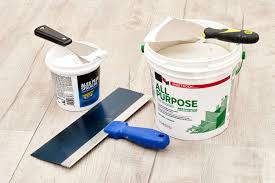Repairing a small nail hole is easy, but when you take on bigger wall damage, things change fast. Larger crack repairs or big dents need more time, more layers, and more patience. That is why one of the most common questions homeowners ask is, How Long Does Spackle Take to Dry on large wall repairs? The size and depth of the patch affect everything, especially the final look once the wall is painted.
At San Diego Home Remodeling, we help homeowners handle repairs of all sizes, and we know drying time is the most important step many people rush. This guide explains what you need to know before you sand, prime, or paint a big repair area.
Why Size Affects Drying Time
When a spackle dries, the moisture inside must evaporate. A thin layer loses moisture quickly. A thick layer holds onto moisture longer, and this slows down drying. This is why a small nail hole may dry in 20 to 30 minutes, while a large repair could take several hours.
Many homeowners wonder How Long Does Spackle Take to Dry for deeper cracks or wider wall patches because product labels only show the “best case” dry time. Real-world projects often need more time, especially if layers are thick.
Typical Drying Time for Large Repairs
Dry time depends on the thickness of the spackle and the area you are repairing. Here is what most projects require:
- Thin large patches: 3 to 4 hours
- Medium-depth repairs: 5 to 6 hours
- Deep or wide repairs: 8 to 24 hours
If you apply multiple layers, each layer needs to dry completely before adding the next one. This prevents cracking and uneven sections later.
Understanding How Long Does Spackle Take to Dry gives you a realistic schedule and avoids rushing into sanding or painting too early.
Conditions That Slow Drying on Large Repairs
Bigger repairs are more sensitive to the room environment. These factors make drying slower:
- High humidity
- Cold temperatures
- Poor airflow
- Heavy or thick spackle application
A large repair in a damp room, such as a bathroom, may even need a full day before sanding is safe.
Conditions That Help Faster Drying
If you want to keep your project moving, these simple steps help:
- Keep the room warm
- Use a fan for airflow
- Apply thin layers
- Choose fast-dry or lightweight spackle
Even so, do not expect large repairs to dry as quickly as small ones. Being patient protects your final results.
Always Test Before Sanding or Painting
Do not rely only on the clock. Test the dryness to avoid damage.
Color
A fully dry spackle looks lighter than when applied.
Touch
It should not feel soft or cool.
Firmness
Press very lightly. If it dents, it needs more time.
Many people searching How Long Does Spackle Take to Dry are trying to avoid the most common mistake: sanding too soon. Doing so makes the surface uneven and forces you to redo the work.
Why Bigger Repairs Need More Skill
Large wall repairs require smooth blending into the surrounding wall. That means sanding carefully and sometimes applying a skim coat to match the existing texture. When homeowners ask How Long Does Spackle Take to Dry on bigger projects, they are usually trying to finish quickly before painting. But big repairs need patience for the finish to look professional.
This is one reason many homeowners hire painting services in san diego for sanding and painting once the repair is complete. Professionals know how long to wait and how to smooth the wall without damaging the repair.
Single Layer vs Multiple Layers
With large repairs, you should avoid applying one thick layer of spackle. Thick applications shrink and may crack as they dry. Multiple thin layers are the key:
- Apply
- Let it dry fully
- Sand lightly
- Repeat if needed
This gives better coverage and a longer-lasting finish.
Can Quick-Dry Spackle Work on Large Repairs?
Quick-dry products are great for small holes but are not ideal for repairing wide or deep damage. They may dry too fast on the edges while the center stays soft. This uneven drying causes bumps when sanding.
Regular or all-purpose spackles are stronger for large patches, even if drying takes longer. When someone asks How Long Does Spackle Take to Dry for bigger areas, the best advice is to choose strength over speed.
Final Thoughts
Large wall repairs always take longer to dry because more material means more moisture must evaporate. Using the right spackle, applying thin layers, and allowing proper drying time makes the sanding and painting process much easier. Waiting a little longer saves you from redoing your work and makes the final finish smooth.
If you are planning more than a simple wall patch and exploring home remodeling in San Diego ca, San Diego Home Remodeling is here to help. From drywall repairs to full room updates and painting services, our team ensures every step is done correctly, including drying time.
Jordansheel


